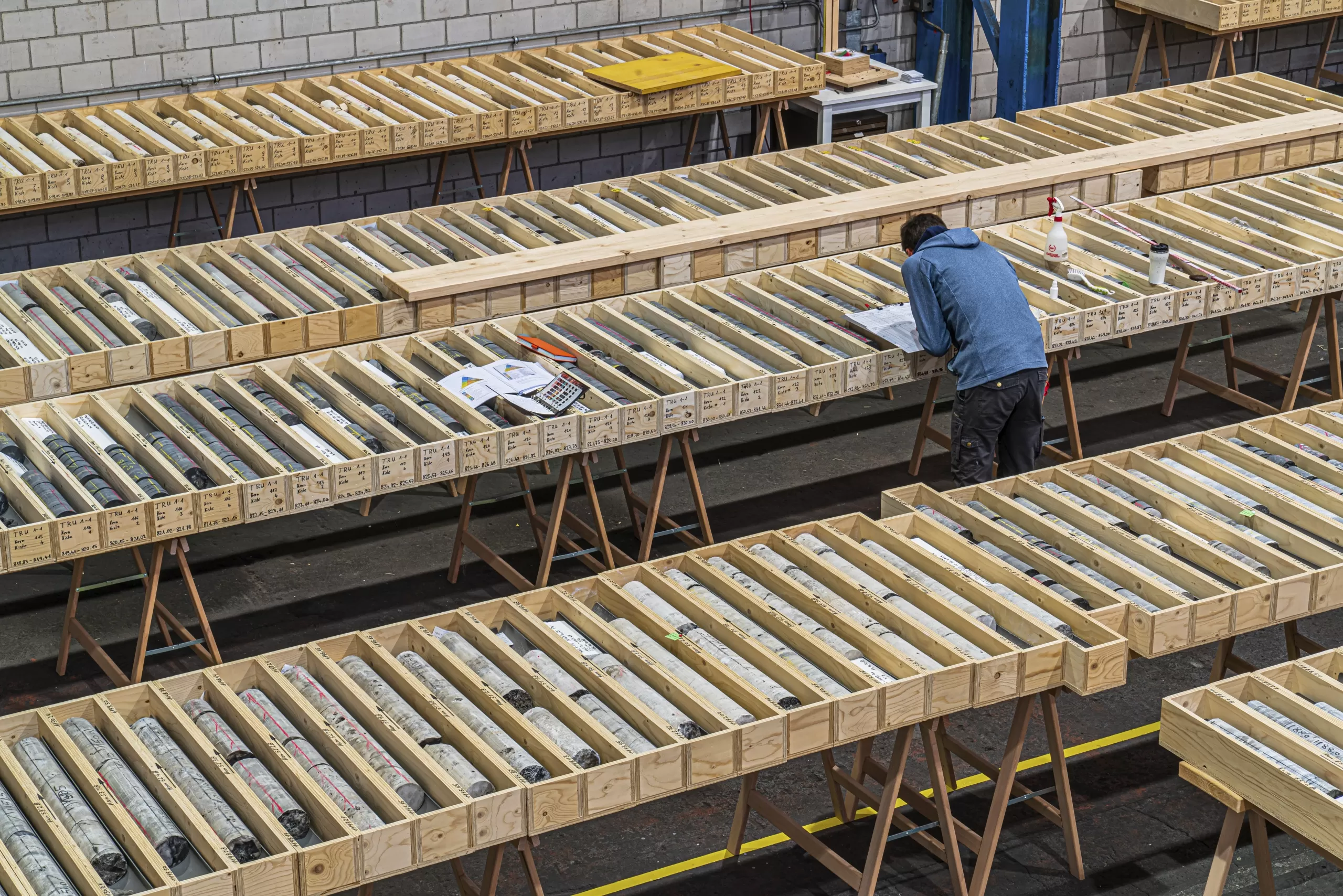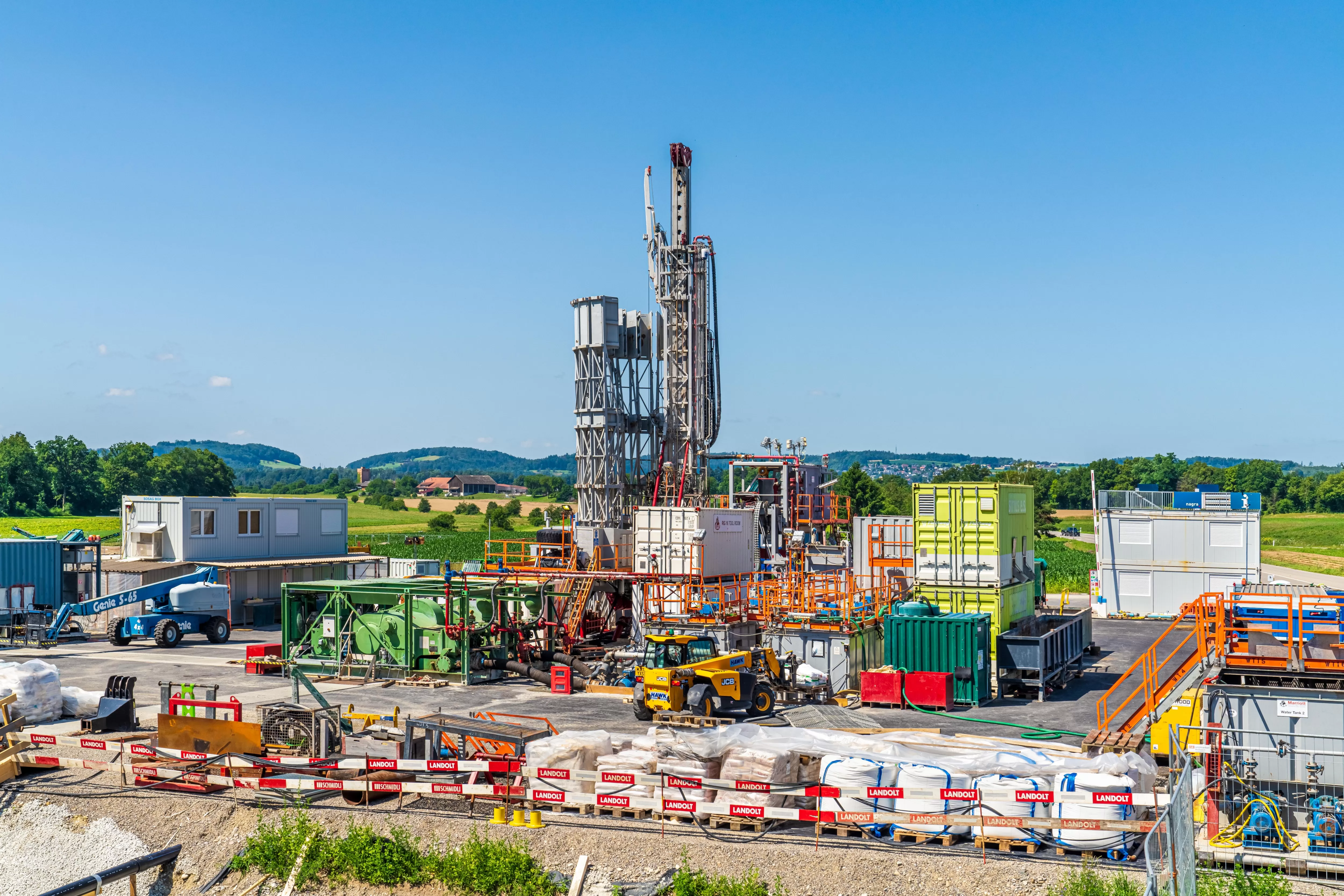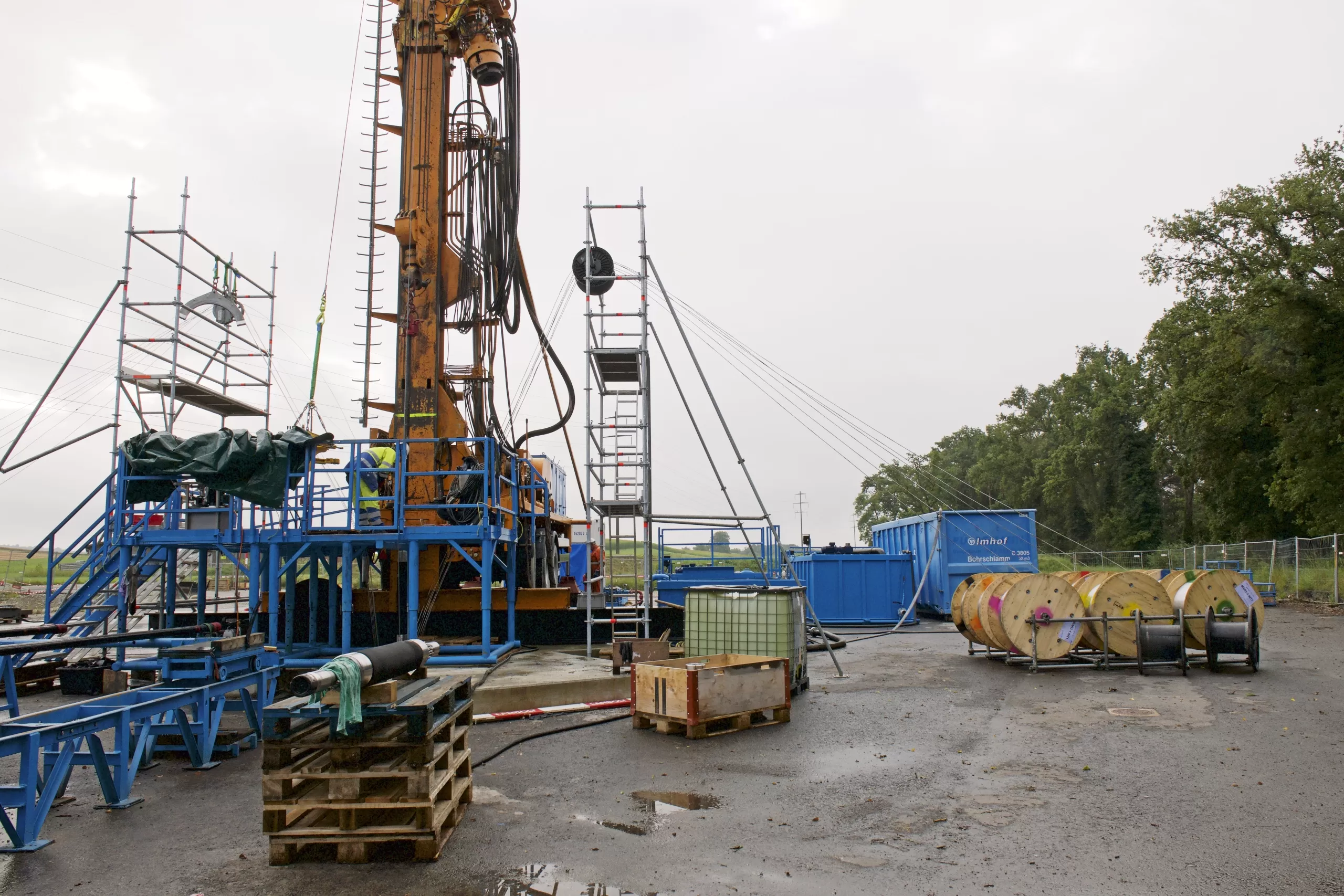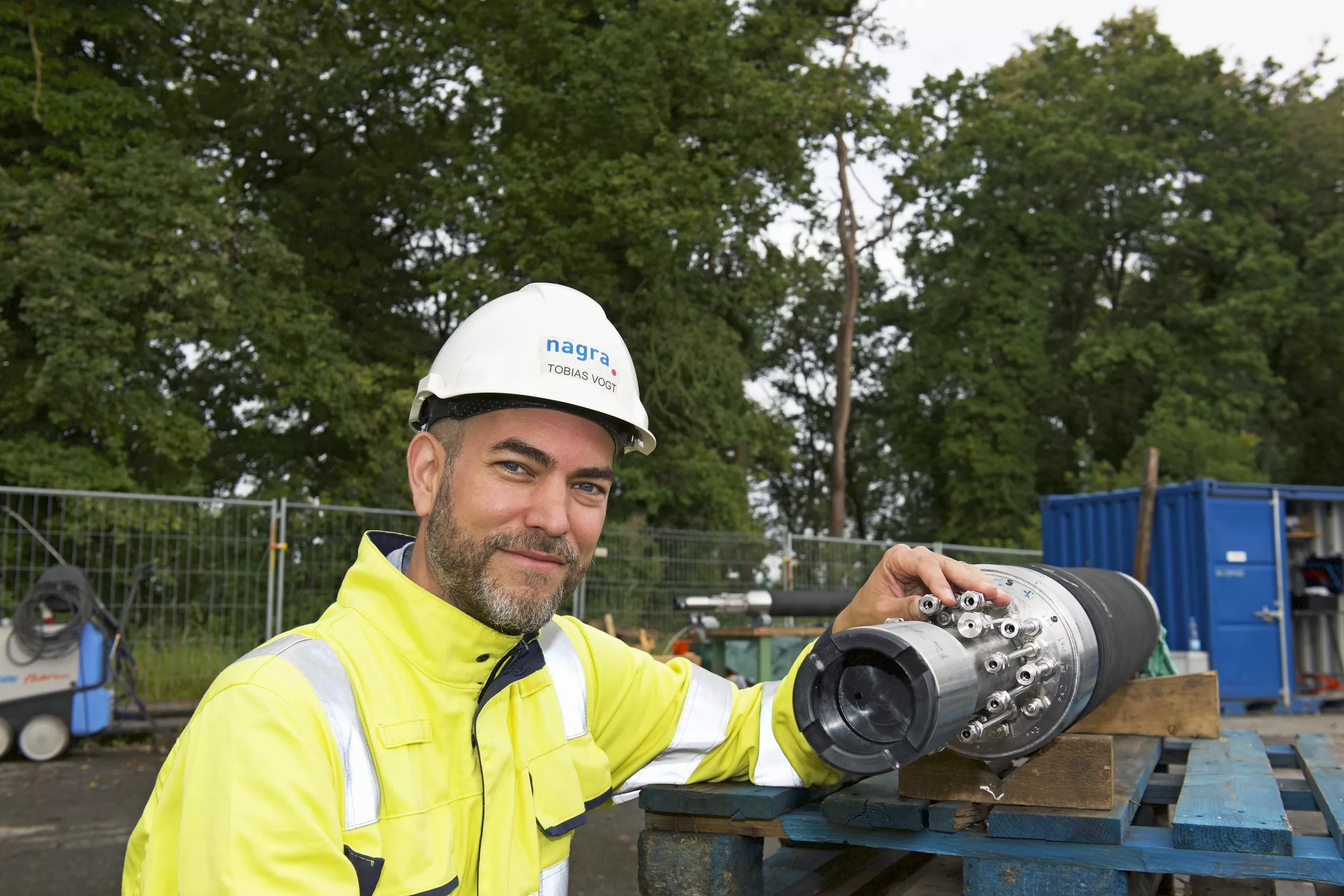
Deep borehole campaign to complete the picture of the underground
Nagra used numerous methods to investigate the geological underground of Northern Switzerland and Wellenberg. The most important of these are deep boreholes.
Nagra is conducting deep borehole investigations in all three potential siting regions for a deep geological repository. A drilling rig is used to reach a depth of several hundreds of metres. The complex drilling procedures allow Nagra to recover rock samples, or so-called drill cores, from the borehole. These are transported to the surface where they are investigated. Sections of the drill cores are sent to laboratories for further analyses. Measurements are also conducted directly in the borehole, allowing conclusions to be drawn on conditions deep below ground.
The Opalinus Clay that will host the repository, as well as the rock formations lying directly above and below it, are of special interest. Investigations include studies of the thickness, tightness and exact composition of this geological safety barrier that will eventually safely enclose the waste.

What is the purpose of the borehole investigations?
The insight gained from the deep borehole investigations is used to complement Nagra’s knowledge of the underground geological environment and to complete the overall geological image. This is crucial for the long-term safety of a repository. A profound knowledge of the underground is also decisive for the comparison of the potential repository sites: Nagra can compare the different siting regions with each other and select the region that is most suitable for a repository.
More information on the deep borehole campaign is available in our special brochure on deep boreholes (PDF).
Underground in Northern Switzerland has been thoroughly investigated
As part of the site selection process for a deep geological repository, Nagra drilled eight deep boreholes in Northern Switzerland between 1982 and 1999 (see map). These reached depths of approximately 1000 to 2500 metres. Since 2019, Nagra has drilled another nine deep boreholes in Bözberg, Bachs, Bülach, Stadel, Marthalen, Trüllikon and Rheinau, allowing it to gain further knowledge of the rock formations in Northern Switzerland.
Long-term monitoring has started at completed boreholes
Measuring equipment is being installed in some of the boreholes to collect data for long-term monitoring.

Sensors are being installed at different depths of the already existing borehole to measure, for example, the temperature and hydraulic pressure in the individual rock formations. To this end, individual measurement sections are isolated using packers (see photo).

What is the purpose of long-term monitoring?
The main purpose of the measurements is to monitor the groundwater in the water-bearing strata in an undisturbed setting, i.e. some time after the borehole was drilled. The aim is to supplement the data obtained from the boreholes. The data from long-term monitoring are not used in the site selection process but will merely document the initial state. This is why Nagra is installing monitoring systems such as these in all three potential siting regions. Later, the data can be used for groundwater monitoring during the construction and operation of the deep geological repository.
To operate and maintain the measurement systems, the so-called rig cellar – a basement measuring around 3 by 5 metres – is kept intact.
Cover photo: Boris Baldinger